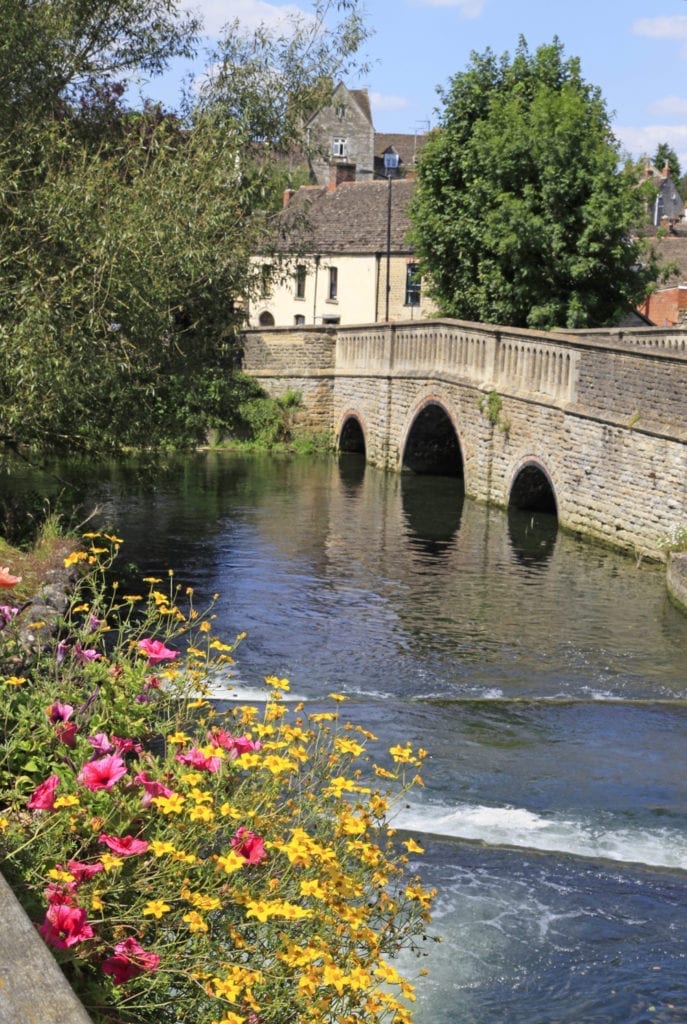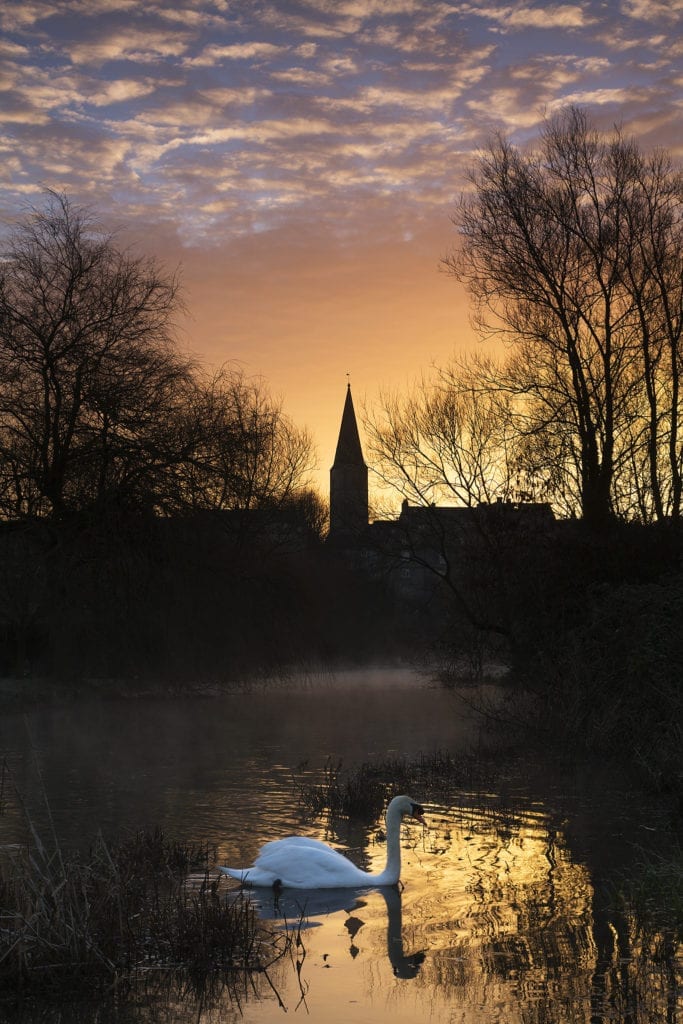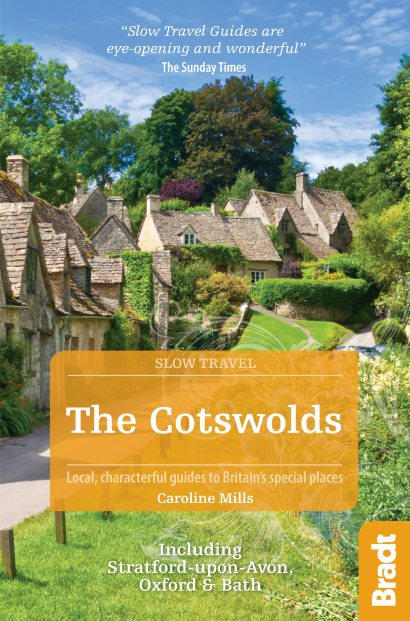Comprised of enchanting historic architecture, a selection of restaurants and cafés to try, and weekly artisans’ and farmers’ markets, the picturesque hilltop town of Malmesbury clustered around the River Avon easily charms its visitors.
Historically a defensive location, Malmesbury has an ideal position upon a hill sandwiched between the two branches of the River Avon. Iron Age settlers were the first to make the most of its natural assets. While today the Dyson headquarters is left vulnerable outside the town’s defences, at the heart of Malmesbury is its magnificent abbey, visible for miles around and dwarfing all other buildings in the town.
Malmesbury’s characteristic corners
Malmesbury Abbey
What can be seen today of Malmesbury Abbey is only a third of its original size, having, in the 12th century, been built in a cruciform shape. Over the centuries, bits have dropped off and never been replaced.
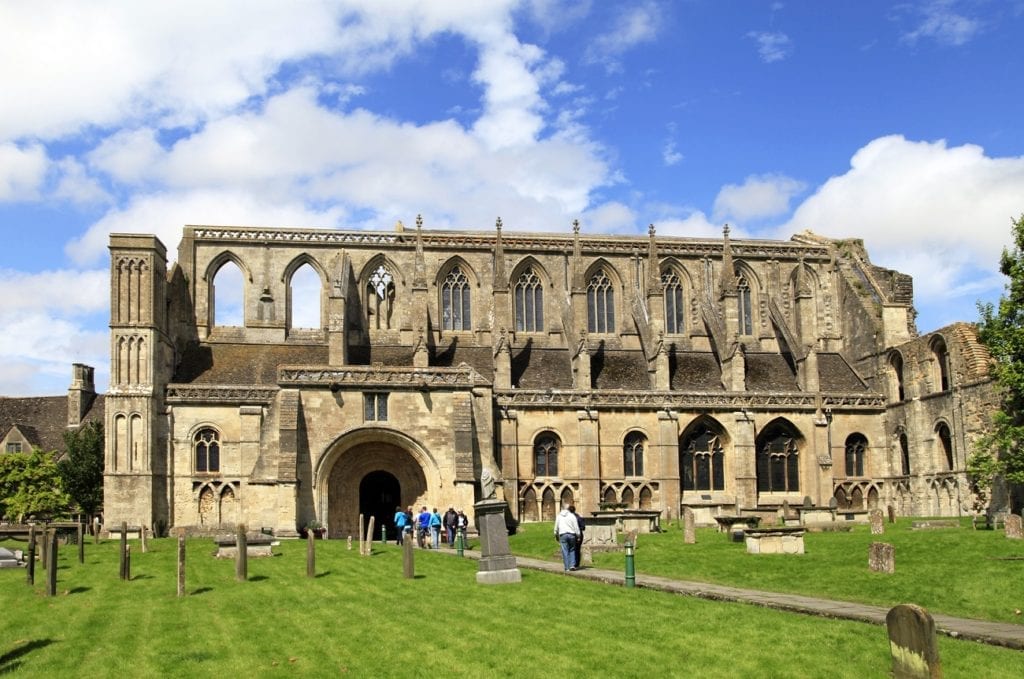
A tower, taller than that on Salisbury Cathedral, was added but fell down, and what remains is essentially the nave, with the transepts – and the monastery – long gone. Since the 16th century, the abbey has been the parish church and inside has an inspiring sense of grandeur, with soaring ceilings. Yet outside, signs of its piecemeal neglect are clearly evident. The south porch once had remarkable stone carving, sadly decaying. The church bells, however, are perpetual; you’ll be able to hear them on Tuesday evenings during bell-ringing practice, wherever you are in the town.
Cloister Garden
The stone ruins of the abbey are more obvious from the peaceful Cloister Garden on its north side, where pigeons roost silently in prayer along the precipice of arched window frames, and pink-tinged valerian clings to life from rocky edges, the stunted posts of once-grand archways and giant flying buttresses left suspended.
Athelstan Museum
You can find out more about the abbey and the history of the town at the Athelstan Museum named after Athelstan, the first ‘King of all England’ who requested that he be buried in the grounds of the abbey.
The museum, which is free to enter and run by volunteers, is bite-sized and gives the first-time visitor a good introduction to Malmesbury, including, of national significance, the history of Malmesbury lace. The pictorial map of Malmesbury created in 1646 during the English Civil War provides remarkable detail of the town and its then defences; it even has the positions of the cannons and look-out posts.
Abbey House Gardens
One of the best places to view the abbey is next door from the Abbey House Gardens. The former abbot’s house (not open to the public) is striking enough but the five-acre gardens in which it sits with views across to the mystical remains of the abbey walls are outstanding.
The gardens are in front of the house and are formal but somewhat rambling. A Celtic cross, a delicate knot garden, herbaceous borders, a loggia, fat topiary balls and a medieval herb garden, shaped like a wheel with spokes, interrupt trimmed lawns and grassy paths. But rebellious roses burst out over their neatly trimmed guardian box hedges, weeping perennials sprawl across carefully tended lawns and vines cascade from archways around the herb garden, all defying formal order. It is a delight.
Behind the house is another world. Steep terraces and criss-crossing paths climb down the rocky hillside to the River Avon and the old monastic fishponds, fed by a cave-like waterfall. Ferns and rhododendrons thrive in damp corners and the vibrant colours of pondside plants reflect in the river. The imagination has been used wisely here and it shows.
A stroll around town
Begin at the distinctive, octagonal Market Cross at the top of the High Street and walk through the Tolsey Gate into the Abbey precinct, where you’ll come across the grave of Hannah Twynnoy who, according to her gravestone, was mauled to death by an escaped circus tiger in 1703. Coming out of the graveyard by the Old Bell Hotel, walk down Abbey Row, where you’ll catch glimpses of the town and the Sherston branch of the River Avon below.
At The Triangle, turn right into the Gloucester road and almost immediately left along St Mary’s Street, to the charming Horsefair, where an illegal market used to run to dodge the town market’s toll.
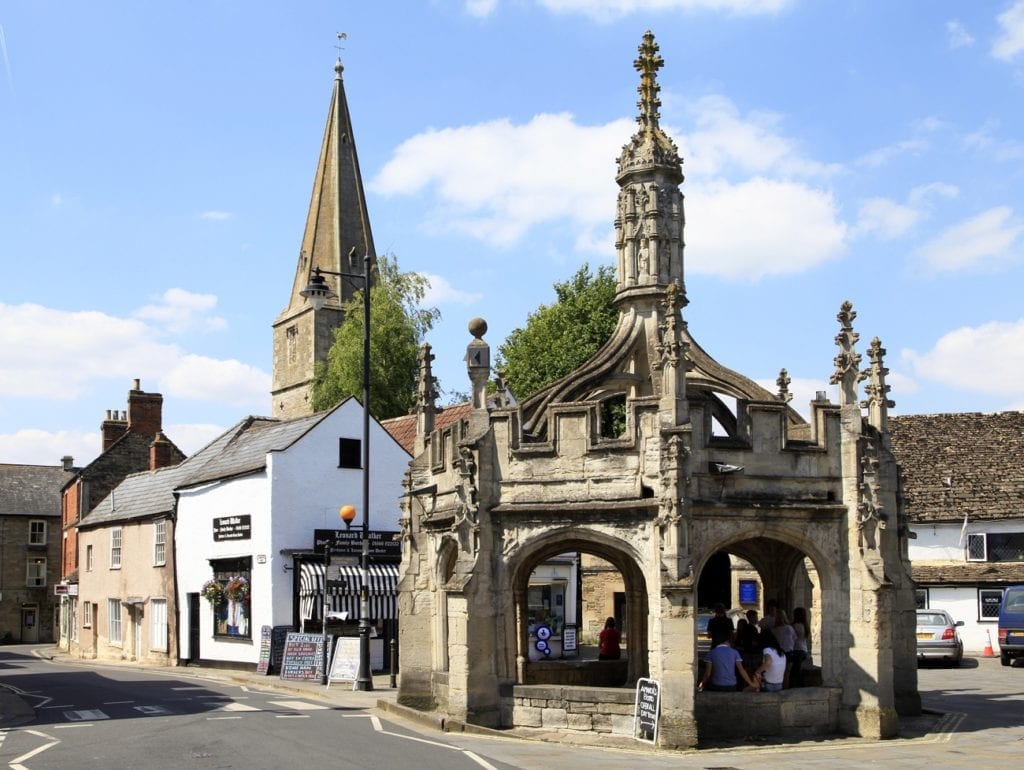
Leave Horsefair via West Street and, at the end, turn right into Bristol Street. Take the first left into Foxley Road and cross over Turtle Bridge, taking in the views of the town from the Avon. Just past the bridge, turn left onto a footpath that crosses King’s Heath, the water meadows that were given to the town by King Athelstan.
Follow the footpath and the river – these are some of the prettiest views of the town – until you come to a bend in the river with a tiny footbridge. The bulge in the river is called Daniel’s Well and is great for a summer paddle.
Cross over the footbridge, passing the backs of residential gardens and climb the steep steps back to the Market Cross. Continue past the cross into Oxford Street where, at its end, you’ll see Tower House. Among the former houseguests were Henry VIII and Charles I but the tower atop was not built until the 19th century, as an observatory.
Turn right into Cross Hayes, one of the old marketplaces, and then left into Silver Street. The land falls away sharply at the bottom as you walk down Back Hill Steps towards the Tetbury branch of the Avon. Within yards, the two branches of the river join together.
Turn right into St John’s Street, past the almshouses and then left where there’s a pretty 12th-century stone archway, once the entrance to a medieval hospital. Cross the river using St John’s Bridge, where you’ll see the old mills that were originally used for wool, but turned to silk production 200 years ago as the wool trade declined.
Just over the bridge turn into Cuckingstool Mead and walk through to St Aldhelm’s Mead. This is a great place for a picnic, as the rustle of giant poplar trees overshadows the noise of the nearby road. The park is overlooked by meadows at the western end, while towards town are the backs of the terraced houses above. Their endearing gardens slope down to a spur of the river, where plum trees dangle in the water.
At the playground, turn right and climb up to King’s Wall, a delightful narrow street of old stone houses that heads back to the High Street. At the junction with the High Street, look down its lower section where you’ll see the terrace of old millworkers’ cottages before turning left to return to the Market Cross.
Malmesbury fare
Malmesbury has numerous independent shops along its High Street, together with an exciting mix of very good cafés, pubs and restaurants. There’s an artisan and farmers’ market held every Friday at the Market Cross.
The Abbey Kitchen
The Abbey Kitchen‘s therapeutic and inspiring spot to relax on sofas within the north aisle of the abbey serves homemade cakes and Fairtrade coffee.
The Old Bell Hotel
Reputedly the oldest purpose-built hotel in England (built in 1220), today The Old Bell Hotel offers traditional Cotswold comfort.
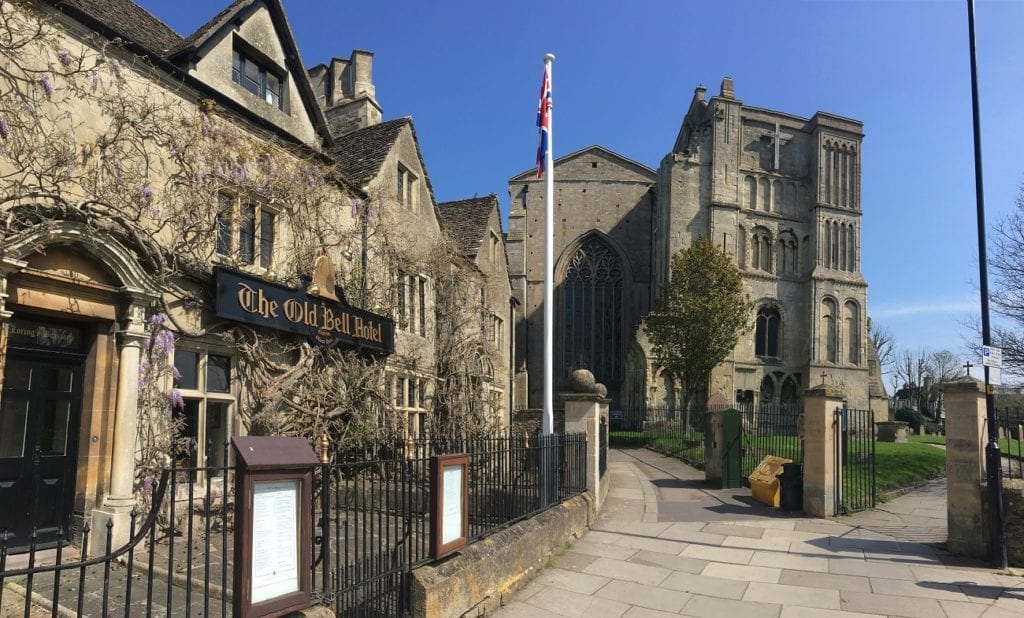
Two restaurants have informal and formal dining for lunches and evening meals, while afternoon tea can be taken in one of the lounges or outside on the secluded garden terrace. Accommodation is available in individually styled rooms.
Summer Café
A small café with a couple of pavement tables, breakfasts and lunches (homemade quiche, salads, baguettes and the like) and afternoon teas (delicious homemade cakes and biscuits) are available and especially popular for Sunday brunch.
More information
For more expert recommendations for charming UK travel, look no further than Bradt’s Slow Travel guide to The Cotswolds:
